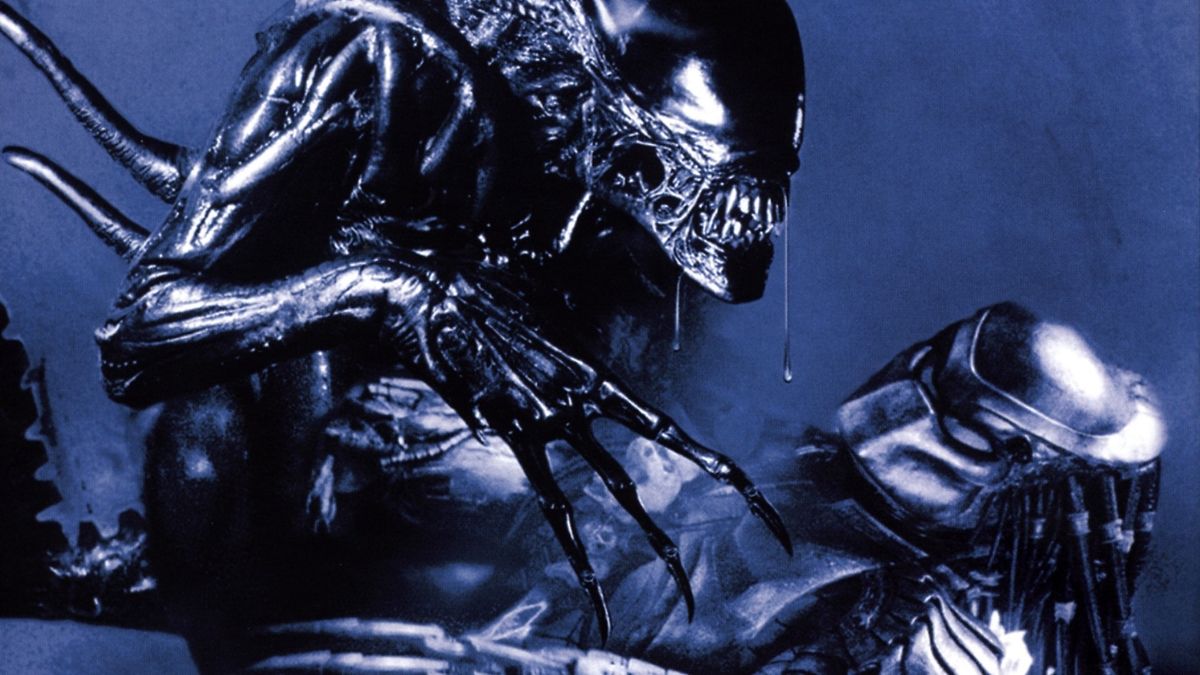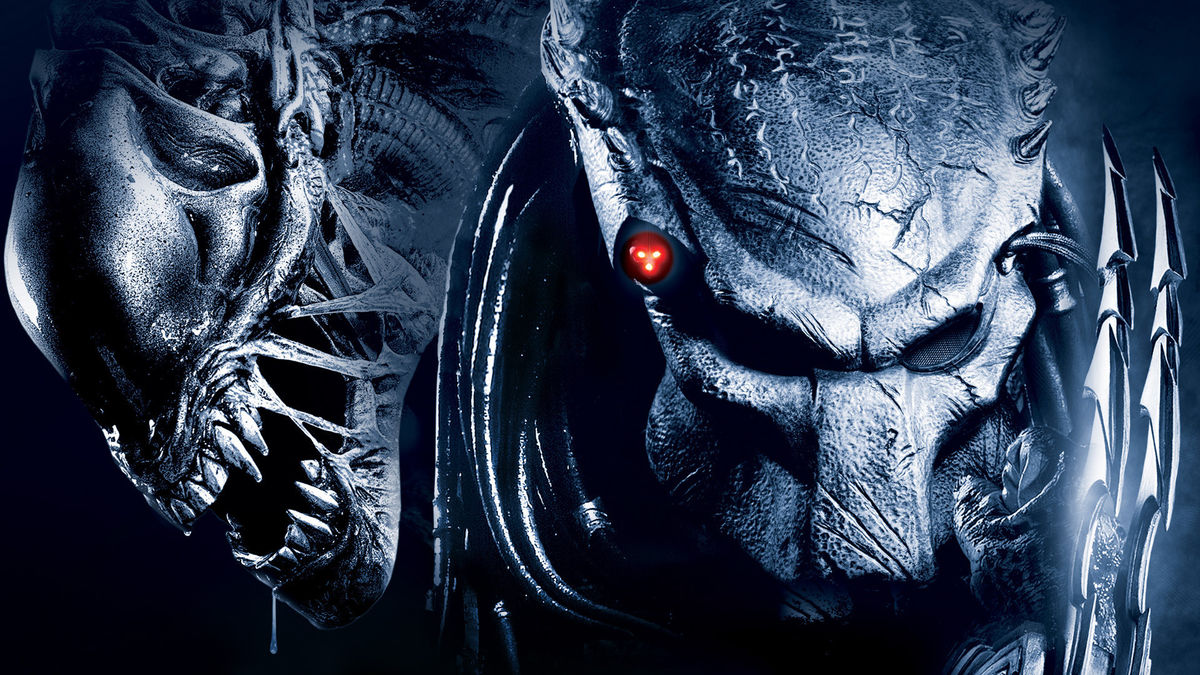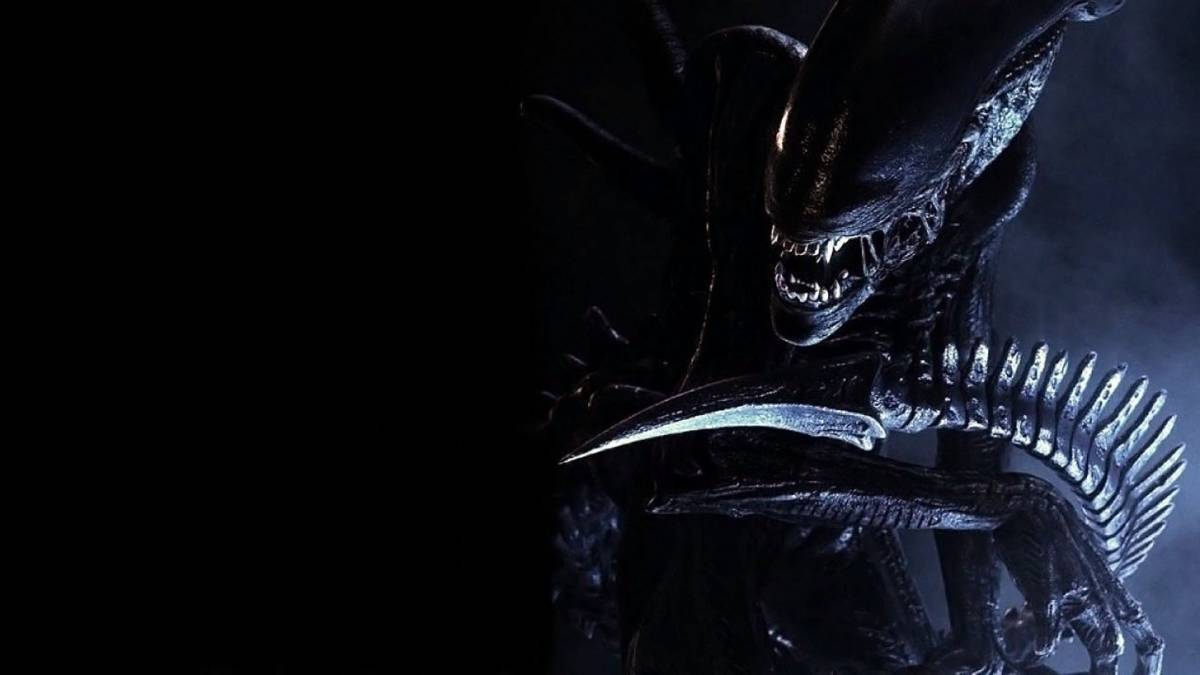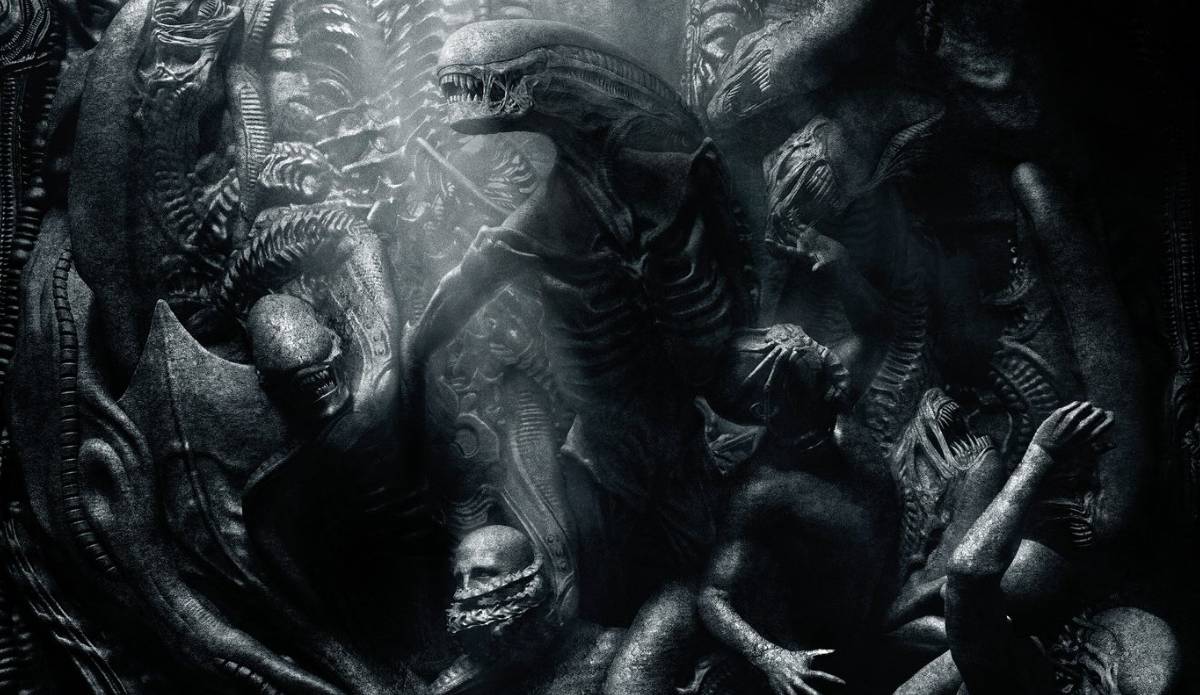Table of Contents
The Alien franchise may be the most important long running (and ongoing?) horror franchise of all time. While it doesn’t boast as many entries as the Friday the 13th series or as much gore as the later Saw films, there likely isn’t any other franchise that your parents, all the neighbors you’ve ever had, and every movie fan (not just horror fans) have seen multiple entries of. But popularity alone doesn’t mark importance. No, it’s the fact that the first two entries in this series redefined their respective genres. Oh, right, and the fact that the first two films in the series are wholly different genres from each other.
Alien made science fiction, and space-set science fiction no less, genuinely scary after decades of zany mad scientists and (allegorically powerful but not especially frightening) poorly costumed alien invaders. It created an atmosphere of dread that was then punctuated with brutal violence from creatures like nothing before. Aliens, with James Cameron at the helm and wise enough not to attempt imitating Ridley Scott, then reinvented the series by delivering an all-out action movie full of big characters and bigger guns, while also expanding the mythology of the first film. Like Alien before, Aliens redefined action films by focusing just as much on the camaraderie (and banter) of its Colonial Marines as the action.
Since then, none of the films may have reached the same level of cultural impact, but almost all of these films are great, and each has something new to offer, which is far more than can be said of most other franchises with more than five entries. Albeit I deeply love the Alien franchise, so I may be more generous to some of these films than other critics, but I genuinely believe all of these films are good (in some way or another), and the novelty of each film plays a significant role in that.
A note that for the purposes of this list, I’ll be ranking the theatrical releases of all the films, no director’s or assembly cuts here, just the movies as they were initially released. And a general warning that these entries will include spoilers for all the films in the series, especially as it’s literally impossible to discuss some of the films without spoiling the previous entry.
So without further ado, let’s take a trip to some alien (pun intended) worlds, and rank the Alien movies from worst to best.
Alien Movies Ranking
8. Alien: Resurrection (1997)
Director: Jean-Pierre Jeunet
Alien: Resurrection shouldn’t exist. Alien 3 brought the would-be trilogy to a brutal but meaningful conclusion with Ripley sacrificing herself to ensure that no more Xenomorphs would be brought into the universe. But 20th Century Fox wanted to make another Alien movie, and even though star Sigourney Weaver, producers David Giler and Walter Hill, and director Jean-Pierre Jeunet all initially thought it was a bad idea, the project ended up moving forward with a script from then up and comer Joss Whedon.
It’s hard to miss when watching Resurrection now that the script is clearly a Whedon product, as it’s filled with quips and feels a bit like a dry run for Whedon’s Firefly space western given that the main cast of characters is a group of mercenaries who fly through space taking on odd jobs. This means Resurrection has a wildly different tone than the previous films.
There are Xenomorphs here, but it feels more like an adventure film with some horrifying creatures, than a creature feature horror film, or even creature focused action film like Aliens. Resurrection is sort of awkwardly placed between the pure fun of the AVP films and the more serious and intellectually curious entries in the Alien canon. The fact that Weaver is playing a clone of Ripley adds to this feeling that Resurrection isn’t quite an Alien movie as well.
But despite its awkward place in the franchise’s history and the clear cash grab nature of the film’s existence, Resurrection manages to be an enjoyable watch. The cast, including Winona Ryder, Ron Perlman, and Brad Dourif, is fantastic and makes the tonal shift to something more campy (Dourif plays a literal evil scientist) work well enough. There are some delightful set-pieces, from a thrilling sequence in which Xenomorphs swim (rather gracefully) to a particularly disgusting Xenomorph hive that the cloned Queen (born of cloned Ripley) creates in the ship’s waste tank.
The film also introduces another variation on the traditional Xenomorph with the “Newborn” of the somewhat genetically human Queen. The Newborn is one of the most disturbing creatures in all of the franchise, but like so much else in Resurrection it doesn’t look like it belongs in the franchise and is more like a high fantasy creature from The Lord of the Rings or a demon from Doom than a version of a Xenomorph. But the Newborn’s death, as it’s sucked piece-by-piece due to decompression through a hole in the ship, is also one of the most wonderfully revolting sequences in all of the films.
So while Resurrection doesn’t quite fit in with its franchise siblings, it’s still an exciting and sufficiently troubling movie.
7. Alien vs. Predator (2004)

Director: Paul W. S. Anderson
Alien vs. Predator, or AVP: Alien vs. Predator as it was initially stylized, is the first Alien movie to take place in the present (or at least the present of the film’s release in 2004), and, somewhat shockingly, is the second and only other film in the franchise to have original Alien writers Dan O’Bannon and Ronald Shusett return to write the story. This is made even more shocking by the fact that, sadly, the story (that ancient humans worshipped Predators who used the humans as incubators for Xenomorphs the Predators would then hunt) isn’t very good.
It’s certainly interesting, but it feels wrong that such a significant piece of mythology hasn’t been explored in either of the franchises, especially in the Predator franchise before.
Whatever its problems, this story, which also introduces a group of explorers to function as audience surrogates, does its job of getting the two titular beasts into the same space so we can watch them fight. The fight sequences between the creatures aren’t the most amazing monster fights ever put to film, but they deliver on the promise of watching these two iconic creatures battle it out.
Perhaps ironically for a movie that brings together two creatures who spend most of their own movies picking off crew/team/militia members, the weakest section of AVP is its middle section, after the Xenomorphs and Predators have been unleashed and they begin to take out explorers. Though it’s easy to pinpoint why: it’s the only film in either franchise to be rated PG-13. This is wildly apparent as the camera cuts away from nearly every violent death that the Xenomorphs and Predators dispense. In at least one instance, it even runs counter to the established mythology of the Predators as we see them hang some of the humans they have killed without flaying them, which they do in every other entry in the Predator franchise.
AVP is fun throughout and the production design of the mysterious temple erected by the Predators millenia ago is fantastic, but it can’t overcome the problem of toning down these monsters that require blood and gore to be their best.
6. Aliens vs. Predator: Requiem (2007)

Director: Colin & Greg Strause
Alien often gets tagged as a film that combined science fiction with the burgeoning slasher genre to give us “a slasher in space.” And while Alien certainly offers the viewer the opportunity to watch a group of people be whittled down to one by a killer, watching it doesn’t really feel like watching any of the slashers that came before or after. Aliens vs Predator: Requiem, on the other hand, is the most (literally) down to earth slasher that the franchise has offered.
The film follows a variety of groups (of humans) in a small town in Colorado including some teens and the town sheriff, while simultaneously showing us a lone Predator hunting down the Xenomorphs that have crash landed with it in the town. The focus on teens allows for some classic slasher scenes like the jocks (who will die violent deaths) being mean to a sweet unpopular kid, and a hot “teen” (played by then 23 year old Kristen Hager) taking off her clothes to go swimming in her underwear.
The town setting allows for one of the highest body counts in any of the films and highlights how quickly Xenomorphs would take over the world if they were to land in a densely populated city. It’s also worth noting that the high body count includes a child and a pregnant woman, making Requiem by far the meanest movie in the franchise, and to be clear that’s a good thing.
And then of course there’s the Predalien: the most visually interesting and exciting creature in the series since the Queen was introduced almost 30 years earlier. While it’s undeniable that the film’s much discussed extreme darkness does the glory of the Predalien a disservice by hiding it in murky cinematography, it’s still exciting to see this creature on screen.
Beyond the lighting issues, the film’s greatest problem (for Alien fans in particular) seems to be its greatest strength, which is that it’s dumb fun. If you’re able to engage with it on that level, it’s a delightful creature feature and slasher hybrid.
5. Aliens (1986)

Director: James Cameron
Aliens is a classic of action cinema, one of the greatest sequels of all time, and very much not a horror movie. While there are certainly still horrifying creatures in the movie, it fully shifts genres from its predecessor. Because of that, the decision between Alien and Aliens comes down to genre preference for many, but Aliens just isn’t as good of an action film as Alien is a horror film.
This mostly comes from the painfully slow opening of the film which takes up nearly an hour before we are set back on LV-426 with the Xenomorphs. The first hour of the film isn’t bad, but it’s all exposition and no action, which for an action movie is certainly a drawback. It also doesn’t help that much of this time is spent watching Ripley deal with the bureaucracy of being debriefed and then attempting to convince corporate suits that the planet is unsafe.
And yet, the film is still a classic for a reason. It widens the scope of the Alien universe by introducing colonialism through terraforming, and of course the attendant Colonial Marines. It deepens the lore by introducing one of the most iconic cinematic creatures of all time in the Alien Queen. And both of these aspects in the film are fantastic. The banter between the marines and Ripley is fun and builds a sense of camaraderie for the viewer, while the action with the marines is wonderfully over the top. The Queen is not just beautifully revealed, but also gives the film its famous showdown in which Ripley fights her in what is essentially a working class mech suit.
The introduction of Newt, Ripley’s daughter on Earth, and the Queen also lends the film some new thematic interests in regards to motherhood, building on the fear of sexual violence and male pregnancy in Alien. Aliens is also important as one of the only genre films to receive an Oscar nomination for its lead actor.
4. Alien 3 (1992)

Director: David Fincher
Alien 3 always had huge shoes to fill, as it follows one of the most iconic horror films ever made and one of the greatest sequels of all time. It was always going to fail culturally unless it was somehow a third reinvention, which would be difficult given that the two major science fiction subgenres of horror and action had already been covered. What Alien 3 does instead is to double down on the bleakness of the first Alien, and beautifully so.
Interspersed with the opening credits are shots of facehuggers crawling around Ripley, Newt, Hicks, and Bishop after their escape from LV-426 aboard the Sulaco. We see one of these break into what looks like Newt’s cryo chamber, but just in case you weren’t sure that they were killing the kid and Ripley’s potential love interest, a violent fire bursts through the ship for good measure. Ripley, of course, survives, but the immediate killing of her companions from the previous film sets the tone for this third film.
As does the setting on a male only penal colony. There’s little as hopeless as a penal colony on the edge of the galaxy, and there also isn’t much more threatening to a woman than being surrounded by men with histories of violence against women. But to make things more interesting, these felons have found God, or at least a version of God. The religion of the inmates is never fully fleshed out, but it adds something to the film that they seem to believe that life is suffering and death is release, and that Ripley is temptation in a divine manner.
This also allows the film to be the most sexually feminist so far as Ripley proudly takes on the title of temptation. At one point she responds to an inmate telling her he’s a rapist and murderer of women with “I must make you nervous.” It’s also the first movie where Ripley sleeps with someone which feels notable, especially given that it’s Ripley who makes the first move by very forwardly asking the medical officer on the planet if he finds her attractive. But it doesn’t abandon the interest in motherhood that Aliens introduced as Ripley quite literally becomes the mother of the mother of the Xenomorphs when we discover that she has a queen gestating inside her.
And of course it’s also scary. This is the first time in the franchise that we see a Xenomorph birthed from something other than a human and the gore and make-up effects are top notch. There’s only one scene with the overwhelmingly destroyed android Bishop (Lance Henrikson), but it’s some of the most squirm-inducing stuff in the entire franchise. And, whether or not this is good or necessary, it’s certainly frightening and upsetting: it’s the only film to have Ripley be sexually assaulted by human men.
Fincher’s music video background is also clear as there’s stunning lighting throughout the film, as well as some slow motion flourishes. The deaths are also aestheticized in a way that they haven’t been before, especially an early death involving a giant metal fan. Albeit some of the CGI looks rough (which makes sense given the time) and the latter half of the film isn’t quite as strong as the first, but thematically, aesthetically, and tonally, Alien 3 is one of the best in the franchise.
3. Alien: Covenant (2017)

Director: Ridley Scott
Alien: Covenant is the second best Alien movie, but not quite the second best movie in the Alien franchise. And perhaps ironically, it likely would’ve been better had there been less of the classic creature in it.
Ridley Scott has talked about how he was “wrong” about the Xenomorph being “cooked” and that Covenant was a course correction after fans of the franchise complained about the lack of Xenomorphs in Prometheus. And so we get the total destruction of the Engineers who were introduced in Prometheus within seconds (and to add insult to injury, in a flashback) in Covenant. It’s clearly a reaction to extratextual events and is somewhat heartbreaking after the ending of Prometheus which promises more answers about the Engineers and why they regret creating humanity.
And yet, Scott doesn’t give up on the ideas that he was exploring in Prometheus either, he simply shifts them. Instead of a focus on the creation of humanity by the Engineers, Covenant is interested in the creator/creation relationship between humans and artificial intelligence, and the possibilities of artificial intelligence acting as creator.
The film opens with a gorgeously shot conversation between Peter Weyland (Guy Pearce) and the android David (Michael Fassbender) wherein they discuss creation and creators. And while Weyland speaks of the question of who created humanity as “the only question that matters,” it’s clear that the film is more interested in David’s questions about his creation by a human.
This focus on artificial intelligence isn’t just thematically interesting though, it also gives Covenant two of the best and most memorable scenes in the franchise, both of which focus on the two androids in the film, David and Walter (also played by Fassbender). The first comes when David teaches Walter to play the flute in an incredibly sexually charged scene full of double entendres and of course the phallic symbol of the flute. The second is a conversation between the two androids about the value of humanity as a species that ends in David kissing Walter. These scenes are brilliant because they play into Covenant’s newer themes of artificial intelligence and creation, while perfectly exploiting the series’ ongoing concerns about sexual violence.
Of course, Covenant also delivers on “the beast” as Scott has called the Xenomorph. In fact, much of the back half of the film plays like a loose remake of Alien as the crew must figure out how to defend themselves against a Xenomorph. And in doing so Covenant manages to bring together the (explicit) headiness of Prometheus and the classic creature feature thrills of the original in a wonderfully discomfiting and visceral fashion.
2. Prometheus (2012)

Director: Ridley Scott
Prometheus as the second best movie in the Alien franchise is likely the most controversial pick on this list. Prometheus is the least Alien movie of all the movies on this list, as we don’t get Ripley or any Xenomorphs here. But what we do get is the best science fiction horror film in the franchise since the original.
Ridley Scott’s return to the franchise is undeniably more explicitly philosophical than any of the previous entries in the franchise and quite literally sets out to offer an in-universe answer to the question “where do we [humanity] come from?” It’s a bold move and one that many found pretentious and at odds with the film’s narrative structure, which is far from tight and cohesive.
But it’s precisely this disconnect between the search for clear answers and the narrative chaos of the film that makes it great. The film’s narrative,which eventually becomes just a series of horrifying sequences, is an answer to those who seek answers: there are none, how dare you ask. By seeking out answers where they shouldn’t, the crew of the Prometheus unleash violent chaos upon themselves, and nearly (re)set in motion the eradication of humanity as a whole by the Engineers who created us.
But it’s not simply this relationship of form and themes that makes Prometheus great, it’s the fact that the horror content is also the best since the original film. There’s the former crew member turned zombie-like creature that attacks the ship, the reanimation of an Engineer’s head that ends up exploding, and, best (worst?) of all, the scene in which Noomi Rapace’s Elizabeth Shaw performs a C-section on herself only to find that the creature inside her is closer to an octopus than anything resembling a human.
Prometheus is a smart and terrifying sci-fi horror masterpiece that likely would have done far better commercially and critically if it hadn’t been part of a franchise that is (albeit somewhat rightly) focused on a creature.
1. Alien (1979)

Director: Ridley Scott
There are few films that seem to foster as much agreement as Alien. It’s considered a perfect film by many (if not most) critics, and while it has its (few) detractors, it’s a beloved classic by both science fiction and horror fans.
It’s hard to say anything new about a film that has shaped much of modern horror, and had enough books written about it to fill its own section of a library, both by academics and film historians, to say nothing of the not one, but two feature length documentaries it’s spawned. Alien is truly a titan of cultural importance that’s been pored over for more than four decades.
And it deserves every single piece of attention it’s been given: Alien is still dread-inducing, thrilling, and awe inspiring with every viewing. Everything about it is perfect, from the cast to the deliberate pacing, and of course the iconic production and creature design. Not to mention the incredible practical effects that introduced the world to facehuggers, chestbursters, and the Xenomorph. And while the prequels are (surprisingly) great, one of Aliens greatest strengths is the lack of explanation the film offers for what exactly these terrifying creatures are and where they’ve come from. The mysterious origin of the Xenomorph and the never explained (at least within the confines of this film) space jockey add a Lovecraftian horror of the unknown that beautifully hangs over the film.
To top it off, all of this genre film perfection has ideas too. No matter what David Cronenberg has said about Alien having “no philosophy” (a sentiment that’s almost certainly informed by the undeniable similarity of the chestburster to creatures in Cronenberg’s Shivers), Alien interrogates and plays into fears of penetration and cultural anxieties about male pregnancy in almost every aspect of the film; from the phallic design of the Xenomorph’s head to the literal rape that allows the chestburster to gestate in John Hurt’s Kane.
There wasn’t really anything else that could take the top slot on this list. Alien is and always will be a perfect organism.
READ NEXT: Ranking Every Hannibal Lecter Movie from Worst to Best
Some of the coverage you find on Cultured Vultures contains affiliate links, which provide us with small commissions based on purchases made from visiting our site. We cover gaming news, movie reviews, wrestling and much more.

